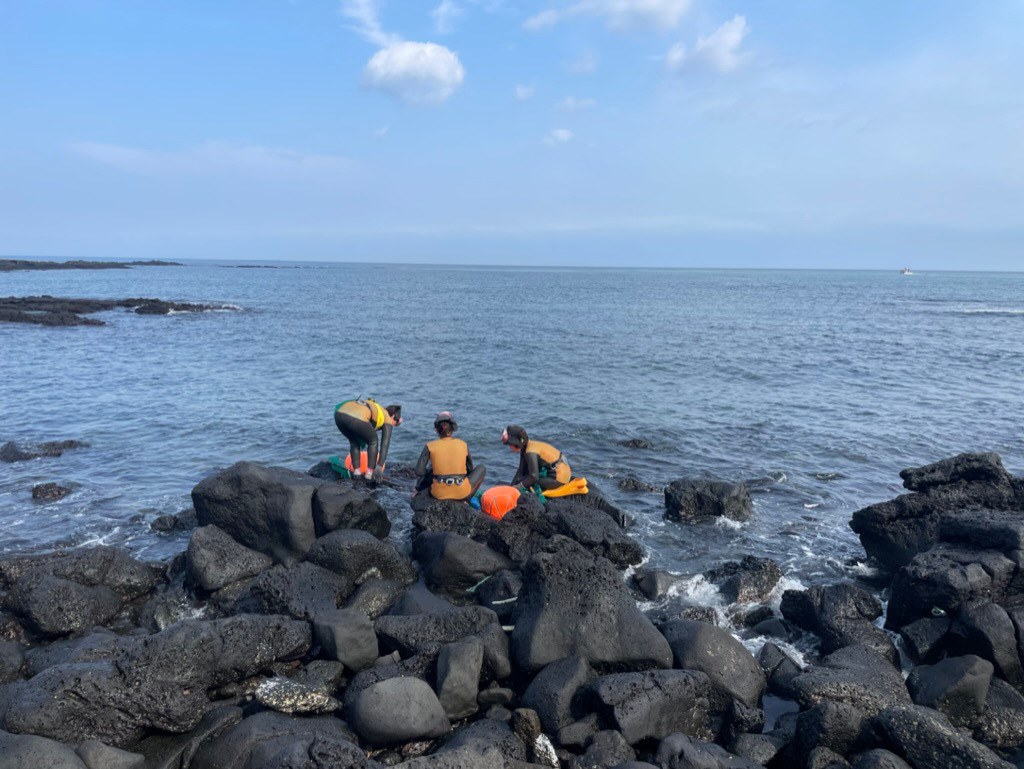The Haeyno do not display classic mammalian responses to diving such as a slowed heart rate and reduced blood flow to muscles.
There’s a group of women in Jeju, an island off the coast of South Korea, that freedive without oxygen for seafood. Haenyeo – literally translating to “sea women” – are cultural divers who have seemingly adapted to the water, being able to dive for longer periods than other people.
A new research published today (18 August) by the University of St Andrews in Scotland assessed the Haenyeo – or Jawmnye in Jeju language, and found that they spend more time under water than some diving mammals such as beavers, while rivalling the likes of sea otters and sea lions.
This culturally significant group is recognised by Unesco as an Intangible Cultural Heritage. However, more than 90pc of Haenyeo are over the age of 60, endangering the future of this group, their practices and their unique adaptations to the sea.
To understand their skills better, researchers from the University tracked the natural diving behaviour and physiology of seven Haenyeo, aged 62 to 80, as they harvested sea urchins.
The scientists used an instrument designed for measuring the behaviour and physiology of wild marine mammals to track the women’s diving and swimming behaviour, as well as their heart rate and blood oxygen.
The study found that despite their age, these women spent 56pc of their time underwater across the two to 10 hours a day they spend diving. This is the greatest proportion of time spent underwater than any humans previously studied, note the researchers.
However, while their diving performance overall rivalled marine mammals, their total time at sea diving per day was lower than their animal counterparts.
The Haenyeo did not display the classic mammalian response to diving such as slowed heart rate and reduced blood flow to the muscles during dives, the study found.
Instead, they showed elevated heart rates and only mild oxygen reductions in the brain and muscles, suggesting their unique style of short, shallow and frequent dives may trigger different adaptations.
Haenyeo. Image: Hyunsung Lee
“The Haenyeo are just incredible humans. Their diving abilities are known to be exceptional, but being able to measure both their behaviour and physiology while they go about their routine daily diving is really unique,” said Dr Chris McKnight, a senior research fellow at the Scottish Oceans Institute at the University of St Andrews and the lead author of the study published in Current Biology.
“I think using animals we consider as aquatic animals to contextualise and give perspective on the Haenyeo divers really helps to demonstrate just how incredible they are.”
As potentially the last generation of Haenyeo, this study offers a glimpse into this vanishing tradition, highlighting the power of human physiological resilience, the study notes.
“We are so grateful that these incredible women were willing to participate in this project. They welcomed us into their gathering spaces, called ‘bulteok’, in the mornings before their dives, shared their pre-dive snacks and tea, and told us stories from a lifetime of diving,” said Dr Melissa Ilardo, an assistant professor in evolutionary genetics at the University of Utah, who co-authored the study.
“They gave us lots of feedback that helped us think about how to interpret the results and design future studies. Their humour and spirit is so fun to be around, we feel incredibly lucky to be able to partner with them.”
Don’t miss out on the knowledge you need to succeed. Sign up for the Daily Brief, Silicon Republic’s digest of need-to-know sci-tech news.
